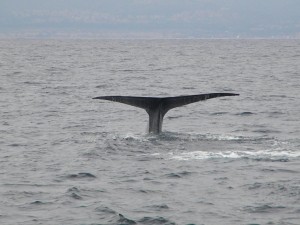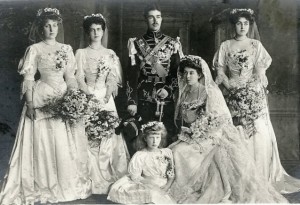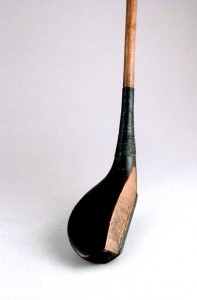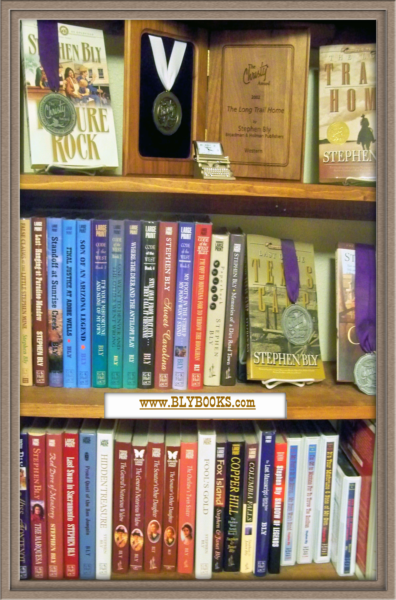Stuart Brannon’s Final Shot by Stephen Bly & Janet Chester Bly … the early 1900s research
When my three sons and I determined to finish the novel my late husband Stephen Bly began, we had quite a challenge. Could a committee create fiction? We had the passion to find out. And that required extensive research of the historical story world of the early 1900s, especially 1905.
Stephen Bly left us with 7,000 words, a one-page synopsis, and a list of character names. We had four months to do the research, craft the rest of the story, and turn in the final manuscript of 77,000 words.
So we divvied out the early 1900s assignments. Here’s the categories:
Early 1900s Places
I toured the Oregon coast from Seaside to Astoria, to study the sights, smells and sounds and historical details: law enforcement, the layout of the town sites, the Salt Works Lewis & Clark memorial, razor clams and the Gearhart Golf Course. I also learned all I could about gray whales, snakes and wild horses. Even discovered the rare presence of a cougar.
I ventured to Fort Clatsop, Oregon, where explorers Meriwether Lewis and William Clark wintered in 1805. I scanned their journals and investigated the Portland Lewis and Clark Centennial celebration of 1905.
We all listened over and over to the audio of the original Stuart Brannon Series, to know Stuart Brannon as close as a brother and the substance of his Arizona ranch life.
Each of the sons probed at least one other topic. Choices included Europe and assassinations. England’s weddings and royalty. Goldfield, Nevada with its mining and labor unions. Panama and the canal project, with connections to France, Nicaragua and Colombia.
The controversy and intrigues of the early 1900s Panama Canal project formed a large part of the plot. “I’m going to make the dirt fly,” President Theodore Roosevelt proclaimed. And he did. It’s alleged Roosevelt supported a revolution that pressured support of that project when Congress balked. Then, there was the war to win against malaria and yellow fever, as well as gold to be mined.
The Tillamook Head promontory near Seaside was a late addition to our landscape scheme, to substitute for the island off the coast of Oregon we’d chosen, that we discovered couldn’t exist. “No islands anywhere, only rock outcroppings,” a museum book store manager told us.
Early 1900s People
We settled on the Clatsop tribe for the Indian characters.
We gathered biographies on famous golfers and historical persons, such as Theodore Roosevelt, Wyatt Earp, Buffalo Bill Cody and W.C. Fields.
We needed to know about orphan farms and Theodore Roosevelt’s Rough Riders.
We also had to study horse behavior, to determine Stuart Brannon’s interaction with an out-of-control Tres Vientos.
Gearhart, Oregon pioneer, Narcissa Kinney, died before our story begins, but her presence permeates the city. For one thing, she made it a dry town, which it remained more than seventy years after her death.
Narcissa Kinney also brought culture in the form of a 200-acre Gearhart Park. She included an auditorium for the Chautauqua traveling circuit speakers and fiery orators, Broadway hits and bands such as John Philip Sousa’s. Inspired by the Chautauqua movement, more than four hundred cities across the country sponsored these same events. President Theodore Roosevelt called them, “the most American thing in America.”
Narcissa’s husband, Marshall Kinney, instigated the links golf course on the north side of Gearhart. My husband loved playing on the grass-covered dunes so much he determined to set a story there. Gearhart Golf Links opened circa 1892 and ranks the second oldest course in the west.
Early 1900s Products and Inventions
We found ads about cigars and cigarettes, clothing styles and golf equipment in old newspapers. We had to learn western genre basics like types of guns and knives, about flashlights and lawnmowers, telephones and walking sticks. In our study of trains, we uncovered railroad land controversies. We searched out transportation, such as motor cars and boats, bicycles and fire trucks. We wondered if 1905 autos had horns. Found out a few did.
The main story begins on a train. The railroad opened up more tourists for the seacoast village of Gearhart, Oregon, tucked between crashing surf and Pacific forests.
Early 1900s Culture and Events
We delved into the artwork and books, plays and music, crimes and diseases and also the politics of 1905. We studied the Spanish-American War, especially the U.S.S. Maine explosion in the Havana, Cuba harbor.
Creating an early 1900s historical novel like Stuart Brannon’s Final Shot begins with facts, the truth in fiction.
~~~~~~~~~~~~~~
To learn more about the early 1900s check out sites like Have Fun With History: http://havefunwithhistory.com/HistorySubjects/early1900s.html
Modern day Chautauqua based on the earl 1900s events, in Orofino, Idaho promoting history, art, entertainment, political science, natural science, archaeology, geology, cultural diversity, and theology. Programs for both kids and adults. A traveling vaudeville. Parade includes marching bands, jugglers, stilt-walkers, dancers. Find out more here: https://www.facebook.com/OrofinoChautauqua
~~~~~~~~~~~~~~~~~~~
YouTube video book trailer for western novel series, Book #7 Stuart Brannon’s Final Shot:
[youtube]http://youtu.be/Pd6mvfeX8Fo[/youtube]





No comments yet.